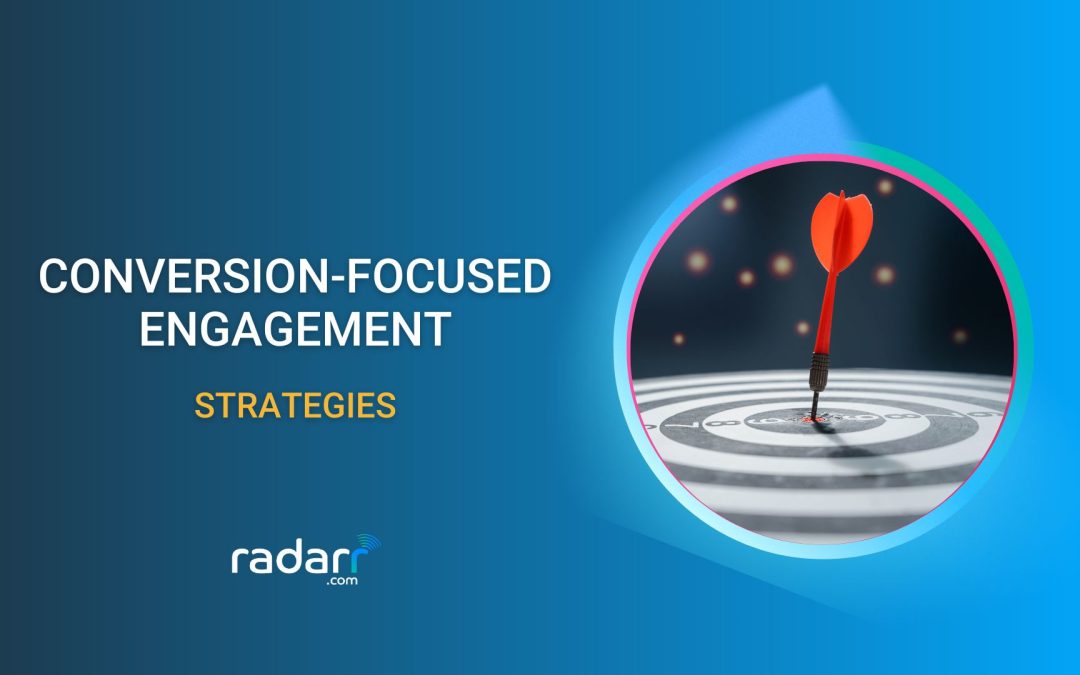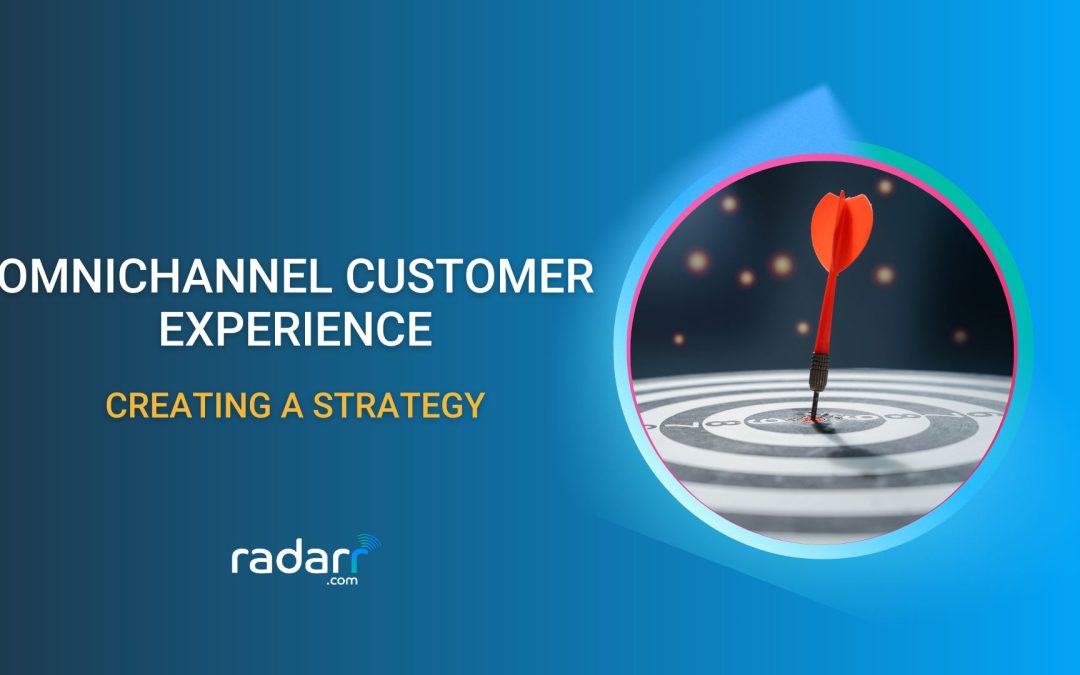How to Create Personalized Customer Experiences at Scale
“A satisfied customer tells a friend; an unsatisfied customer tells the world.”
A positive customer experience impacts brand loyalty and customer retention and 80% of consumers are likely to purchase from businesses that provide personalized experiences.
With the high level of personalization provided by Amazon, Netflix, or Spotify, consumers now expect similar personalized experiences everywhere that cater to their individual needs.
In this post, we’ll delve into how you can create personalized experiences on a larger scale for your customer base.
What is personalized customer experience?
A personalized CX is when a business caters to a consumer’s preferences and predicts their requirements based on their behaviors, such as the content they interact with, shopping habits, or past shopping history.
Customers often like to buy from the brands they trust and where they are valued, whether with online or offline retailers. It is all about designing products and services to meet customers’ preferences and create a better experience.

Why is personalized customer experience important?
Here are a few reasons why your business must focus on personalized customer experience:
Boosts customer retention
Personalization increases the number of repeat customers, revenue, customer lifetime value (CLV), and brand loyalty. 60% of consumers become repeat customers after a personalized shopping experience with a retailer.
Increases revenue
Most consumers are willing to pay more for a brand that offers a better customer experience and stays loyal as long as the customer experience and service are top-notch. A satisfied customer is more likely to mention your brand to others, resulting in customer acquisition and growth. Businesses can drive more sales through effective cross-selling and upselling through personalized promotions and recommendations, leading to more revenue.
Improves brand reputation
A happy customer will surely share and spread their positive experience through word of mouth, generating free organic marketing for your brand. This helps build a positive brand image and improves overall reputation.
Increases average order value (AOV)
We often buy something impulsively, and that’s all thanks to a personalized shopping experience. 49% of customers say they made a purchase they did not want to buy because of customized recommendations from the brand they were interacting with.
5 roadblocks faced when personalizing CX
Here are a few common challenges faced by businesses when personalizing CX:
Data quality and analysis
Inaccurate or incomplete data can pose a challenge while creating meaningful customized experiences and lead to misguided recommendations, reducing the efficiency of personalization efforts.
Organizational silos
When different departments work in isolation, it isn’t easy to consolidate customer data comprehensively. Without a unified view of customer data, it is challenging to create precise personalized experiences. The best solution is to adopt a cross-functional approach and train employees at every level to be customer-centric. Ensure that they understand how they can influence customer journeys and how to maximize each customer’s experience.
Outdated technology
If your data platform is outdated, your business will have issues implementing effective personalization strategies. An outdated infrastructure may lack the abilities of advanced analytics, AI, and automation. Without a modern platform and tools, your business will struggle to gather, analyze, and consolidate large amounts of data.
Data privacy concerns
Customer data is the core of a robust personalized experience involving trust. Customers trust that you will use the data responsibly and protect it. Make data protection a trademark of your business. Always maintain transparency and let your customers know what data is being collected, how it is collected, and how it will be used.
Accessing Data from First-time Customers
When a customer interacts with your brand for the first time, it’s tricky to provide a personalized experience immediately. Since the goal is customer retention, include a checkbox option at check-outs where they opt-in to share their details with your brand.
5 Steps for CX personalization
Let’s look at how you can start personalizing customer experiences:
Understand your customers
Gather data on your customers’ preferences, behaviors, demographics, and past interactions with your brand using customer surveys, CRM software, and analytics platforms.
Divide your consumer base into distinct segments based on purchase history, preferences, and demographics, allowing you to personalize your messages and experiences to each group’s specific needs and interests.

Create buyer personas
Create detailed profiles of your ideal customers, including their goals, pain points, and communication preferences. Use these personas to guide your personalization efforts. Here’s an example of a buyer persona:

You can use it to address customers by name, recommend services or products based on browsing history or past purchases, and tailor the content based on their interests and preferences.
Provide relevant content
Provide users with information that aligns with their interests, needs, and preferences. You can share blog posts, articles, videos, or product recommendations tailored to the user’s behavior, demographics, or past interactions.
Using data analytics and machine learning algorithms helps identify relevant topics or products for individual users. Businesses can consistently deliver relevant content to enhance user satisfaction, foster engagement, and drive conversions and loyalty.
Measure and iterate
Monitor your personalization efforts by tracking key metrics like:
- engagement
- conversion rates
- customer satisfaction scores
- retention rates
You can gather customer feedback to gain invaluable insights into customer preferences and satisfaction levels. Employing A/B testing allows for systematic experimentation with different personalization strategies to identify what resonates best with the audience.
Improve and Adapt
Customer preferences and behaviors change like the wind, so continuously gather feedback, analyze data, and adapt your personalization strategies accordingly. Stay alert and responsive to changes in the market and your customers’ needs.
7 best practices for personalized customer experiences
Here are some key best practices to keep in mind:
Gain customer data through segmentation
By segmenting the customers into distinct groups based on specific criteria, brands can identify those with common characteristics. This will make it easier to appeal to individual groups with relevant products, services, incentives, and special offers that cater to the requirements of that group. Every group may vary in their expectations, requirements, and interests; hence, segmentation will help you create your approach to match the needs of each target group.
Create an omnichannel experience
Personalization means connecting with your audience where they are. Customers should be able to access your products and services on multiple platforms. Identify which social media platforms or direct communications preferences your customers favor. This will help you create an omnichannel personalization strategy that focuses on interacting with customers and prospects in the format that appeals to them most.
Sephora’s Beauty Insider Rewards program is known for its seamless omnichannel customer experience. With the Beauty Bag accessible on both mobile and desktop, Sephora’s loyalty program offers personalized product recommendations, exclusive discounts, and birthday gifts based on customers’ purchase history and preferences.

Automate your Customer Experience
Customers expect top-notch service. With an increasing demand for quick assistance around the clock with a click of a button, an automated system can help your brand sell the experience. These technologies can help analyze customer data, identify patterns, and deliver real-time customized content and recommendations.
Use AI-driven chatbots and online reputation management tools to provide real-time personalized assistance and resolve any queries on social media. These can help your support team address more quickly and effectively a larger volume of individual customer requests.
Create self-service options
Self-service options allow customers to take control of their experiences. Provide your customers with opportunities to help themselves. You can convey information with step-by-step guides, how-to-videos, FAQ pages, how-to videos, and diagrams.
Users can easily manage their preferences, track orders, and access relevant information with the help of a personalized account dashboard.
Amazon allows customers to easily browse products, make purchases, track orders, and manage returns without direct assistance. Features like one-click ordering, recommendations, and easy returns provide a convenient shopping experience for users.

Introduce loyalty programs
Loyalty programs are an excellent way to build a loyal customer base, increasing customer retention. Loyalty programs and rewards encourage customers to continue engaging with the business to earn points and rewards, promoting loyalty toward the brand. Incentivizing those customers with special discounts or exclusive offers inspires repeat business and generates positive word-of-mouth referrals.
Starbucks’ rewards program helps members earn points (stars) for every purchase and redeem the same for free drinks and food items. It also offers personalized rewards, such as birthday treats and bonus stars based on purchasing behavior.

Provide support via social media
Your customers expect you to meet them where they are, and they are on social media. But before this, you must know where your customers are.
Use social listening tools to monitor comments on your products or services and develop a systematic approach to your response. Respond quickly and consistently to build rapport with your customers. Customers will often leverage your service or product because of how the complaint was handled.
Act on customer feedback
Collecting customer feedback and acting upon it should be a continuous process to improve your product. Asking for feedback on the communication with your brand through real-time surveys allows you to collect data, identify key areas of improvement, and work those improvements into your service or product.
Wrapping Up
Personalizing customer experiences is what sets your brand apart. With the right tools in your tech stack, you can offer customers unmatched CX at scale.
Using Radarr’s robust platform allows you to track customer sentiments while giving you a bird’s eye view of how customers perceive your brand and how you can offer them meaningful CX.
Book a demo to witness the power of social listening today!












